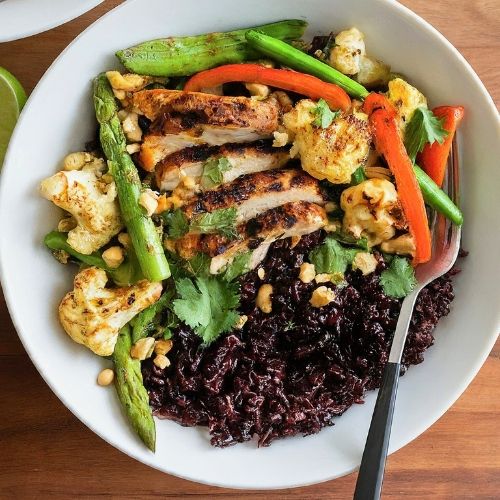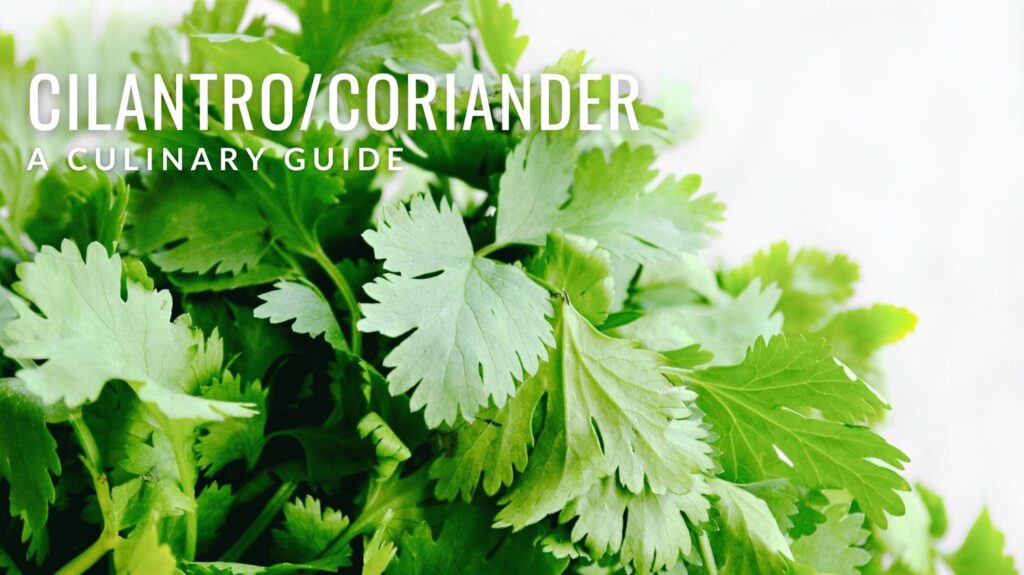We recommend products we would use ourselves and all opinions expressed here are our own. This post may contain affiliate links, which means we might make a small commission at no extra cost to you. This helps us keep the blog running. See our full disclosure here.
The Vibrant Flavors of Cilantro: How to Use and Enjoy This Lively Herb
Cilantro is such a lively, spunky herb. Its bright, citrusy notes can heighten many dishes, from savory to sweet, with just a sprinkle of its delicate leaves. As I write a series about how to use herbs, I would be remiss if I did not pay homage to this lively herb. Cilantro, I have to admit is not my favorite herb. I’m one of those people who think it tastes like dish soap. But I don’t mind if it’s used in a marinade or cooked into something. Others in my family like it and I know you may too! Which is why you may be here. Oh how I wish I loved it–because it has so many great characteristics and uses. Please don’t let my bias sway you—I have some great tidbits below on how to use this culinary gem.
Growing Cilantro
Growing this herb is relatively easy, making it a popular choice for home gardeners. It can be grown from seed and thrives in cool weather, making it ideal for spring and fall planting. The herb prefers temperatures between 50°F to 85°F (10°C to 29°C) and can be grown both indoors and outdoors, making it versatile for various climates. It’s typically grown as an annual, but if allowed to flower and set seed, it may self-sow for future seasons. Seed collection is straightforward, as cilantro produces small seeds known as coriander that can be harvested once they turn brown and dry on the plant. Coriander can be planted to grow cilantro plants as well as used for culinary purposes, making them a versatile ingredient in both the kitchen and the garden.
Nutritional Benefits
Rich in vitamins A and K, cilantro has antioxidant properties and can support bone health. Additionally, cilantro contains potassium and manganese— both trace minerals with various health benefits.
Storing Cilantro
A delicate herb that can be stored in a few different ways:
- Refrigeration:
- Place the herbs in a glass of water, similar to cut flowers.
- Cover the top with a plastic bag to help retain moisture.
- Paper Towel:
- Wrap the herbs in a slightly damp paper towel and place it in a plastic bag.
Note: Avoid washing cilantro before storing–this can shorten its shelf life.
For longer storage:
- Freezing: Freeze chopped cilantro in ice cube trays covered with water or freezer bags.
- Drying: Cilantro can be dried, but it loses flavor and aroma in the process. If you prefer to dry cilantro, air dry it or use a food dehydrator.
When using dried, use about 1/4 teaspoon of dried for every tablespoon of fresh.
Characteristics – When to Use Cilantro
Also known as coriander leaf, this herb displays a vibrant, citrusy flavor with hints of earthiness. Its fresh, bright taste makes it a perfect addition to dishes that benefit from a burst of herbal freshness. Use cilantro in salads, salsas, guacamole, and various Asian, Latin American, and Middle Eastern cuisines. Or just eat it straight from the garden like my daughter does!
Coriander seeds, have a different flavor profile than the fresh leaves, offering a warm, citrusy, and slightly floral taste. They are often used in pickling, baking, and spice blends. As an addendum to my general aversion of the herb’s soapy taste, coriander is one of my favorite seeds to use in a variety of ways. Dry rubs, roast chicken, added to broth, pickles or homemade gin are just a few places coriander shines.
Cilantro Substitutes
If you’re out of cilantro or looking for alternatives, consider using parsley, which shares a similar appearance but has a milder flavor profile. Other substitutes include culantro, also known as long coriander, or fresh mint, depending on the dish’s flavor requirements and availability. I like to substitute parsley when I’m making salsas or soups. If I’m making something asian I substitute with Thai basil and mint.
Flavor Profile and Pairings
Cilantro’s flavor profile is characterized by its citrusy, herbaceous taste with subtle notes of spice and sweetness. It pairs well with ingredients like lime, garlic, ginger, chili peppers, tomatoes, onions, avocado, and coconut milk. Incorporate cilantro into dishes such as curries, soups, salads, tacos, ceviche, and grilled meats or seafood.
What Complements the Herb
Look to add the herb in dishes that feature bold, vibrant flavors. It adds a refreshing touch that balances rich or spicy ingredients. Its bright, citrusy notes enhance the overall flavor profile of various cuisines, including Mexican, Thai, Indian, and Vietnamese dishes. Other herbs such as spearmint, Thai basil, and parsley are also good herbs to pair with cilantro as they complement and balance each other well.
Good Contrasts for Cilantro
For contrast, pair it with ingredients that offer different flavor profiles and textures. Consider combining it with creamy avocado, crunchy earthy radishes, or savory cheeses to create a balance of taste and texture in your dishes.
Recipe Ideas Using Cilantro
- Appetizers: Grilled Shrimp Skewers, Fresh Tomato Salsa, or Pico de Gallo
- Sauces: Chimichurri, Spicy Cilantro Yogurt Sauce
- Sides: Rice, Corn Salad
- Mains: Chicken Tacos, Beef Stir-Fry, Southeast Asian Cilantro Lime Chicken Black Rice Bowls
- Drinks: Cilantro Limeade, Cucumber Cilantro Mojito
I love using cilantro in marinades like this cilantro lime chicken recipe:

Please let us know in the comments below if you try any of these ideas or have any of your own! We’d love to hear from you. And while you’re here, check out some of our other herb-related posts if you’d like some other fresh and interesting herb ideas.



